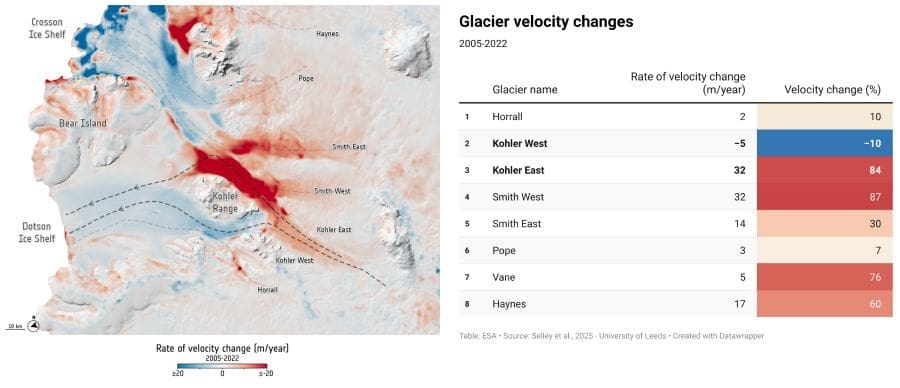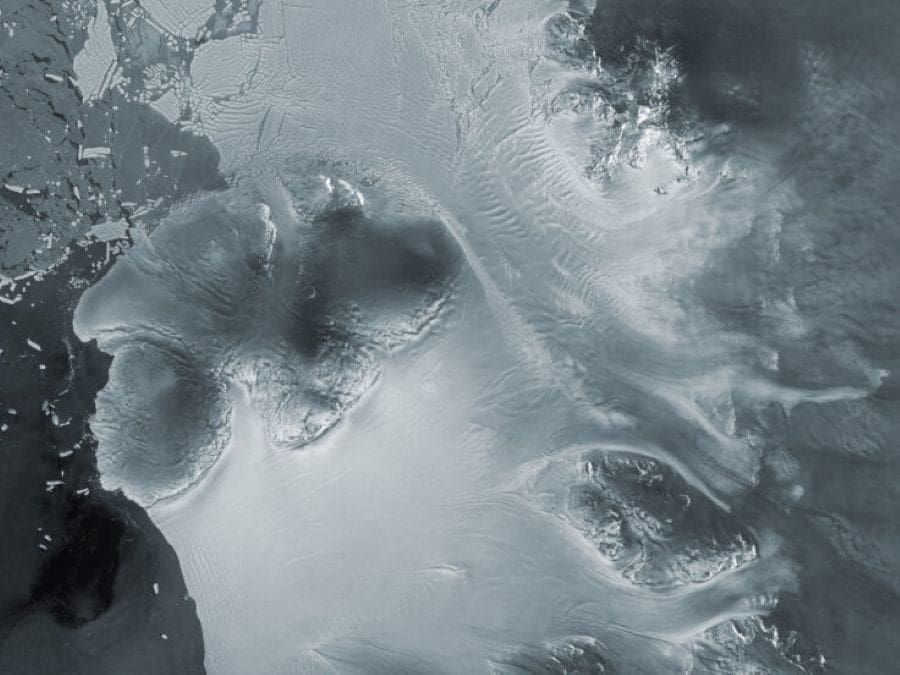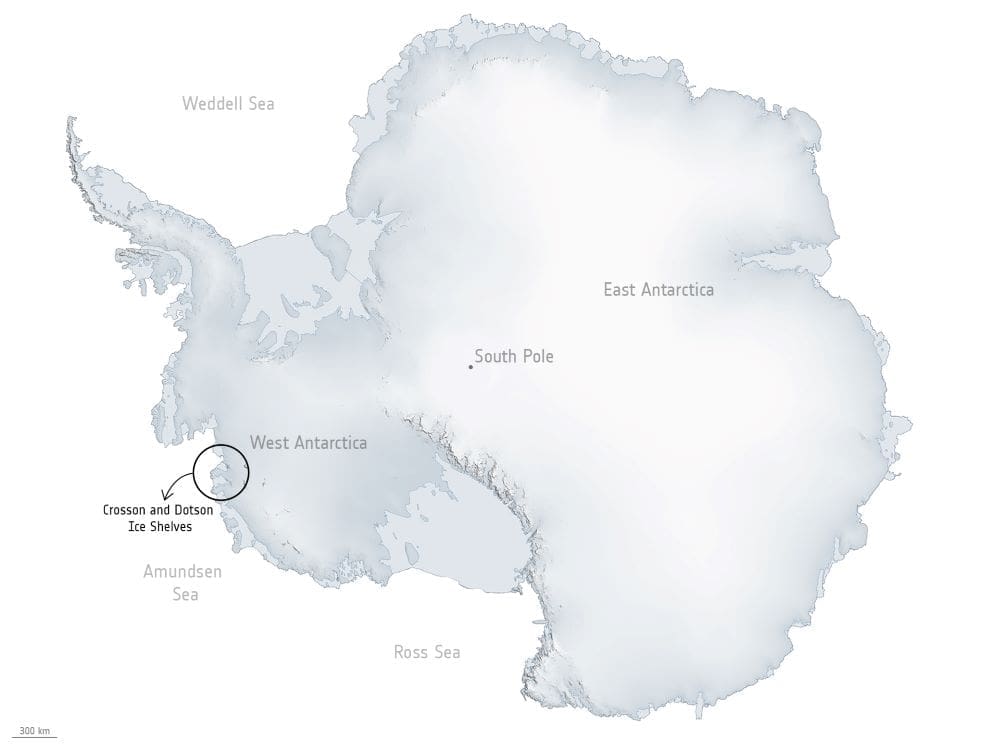Summary:
In a striking twist to Antarctica’s changing landscape, scientists have detected an Antarctic glacier in ‘stealing’ ice from its neighbor – an event unfolding far faster than previously thought possible.
The study, published in The Cryosphere, tracks dramatic changes in the movement and speed of eight ice streams feeding the Dotson and Crosson ice shelves between 2005 and 2022. Researchers observed a significant acceleration in seven of these streams, with one – Smith West Glacier – nearly doubling in speed. In contrast, Kohler West Glacier slowed by 10%, a phenomenon attributed to a redirection of ice flow toward the faster-moving Kohler East Glacier. This unexpected redistribution, described by scientists as “ice piracy,” signals a shift in how Antarctic glaciers behave as ocean-driven melting reshapes the region’s ice dynamics.
Using satellite data and ice-thinning measurements from ESA’s CryoSat mission, the team tracked how grounding zone changes are altering glacier flow directions and ice flux into downstream shelves. The process, once thought to take centuries, is now happening in under two decades. The findings raise new concerns about Antarctica’s future contribution to sea level rise and suggest that internal flow reconfigurations may play a greater role in ice sheet evolution than previously recognized.

West Antarctic glacier observed stealing ice from neighbour
Research led by the University of Leeds has revealed that this dramatic glacial theft has occurred over less than 18 years, challenging scientific understanding of Antarctica’s ice dynamics and potential sea level rise contributions.
Dr Pierre Dutrieux, climate researcher at the British Antarctic Survey (BAS) and study co-author, explained the significance of the findings: “This study provides an interesting demonstration of ice piracy, where flow into one glacier gradually switches to flow into another glacier, as the ocean melts the grounding zone and re-configures ice flow.”
Using high-resolution satellite data, the international research team measured ice speed changes in the fast-changing Pope, Smith and Kohler (PSK) region of West Antarctica between 2005 and 2022. They found that seven ice streams had significantly accelerated, with one almost doubling in speed (87%) at the boundary where ice meets ocean. Three others increased speed by 60-84% during this period.
The most striking observation was the contrasting behaviour between neighbouring glaciers. While Kohler East and Smith West Glaciers flowed approximately 560 metres per year faster in 2022 compared to 2005, Kohler West actually slowed by 10%.

Dr Heather Selley, lead author who conducted the research as a PhD researcher at the University of Leeds, said: “We think that the observed slowdown on Kohler West Glacier is due to the redirection of ice flow towards its neighbour – Kohler East. This is due to the large change in Kohler West’s surface slope, likely caused by the vastly different thinning rates on its neighbouring glaciers. This is effectively an act of ‘ice piracy’, where ice flow is redirected from one glacier to another, and the accelerating glacier is essentially ‘thieving’ ice from its slowing neighbour.”
The team calculated ice velocity using tracking techniques that measure the displacement of visible surface features such as crevasses. They also incorporated ice-thinning data from the European Space Agency’s CryoSat mission.
Professor Anna Hogg from the University of Leeds added: “The changes in flow direction have substantially altered the ice mass flux into Dotson and Crosson Ice Shelves. This suggests that ice flow redirection is an important new process in contemporary ice sheet dynamics, which is required to understand present-day structural change in glaciers and the future evolution of these systems.”
The research represents a significant collaboration between Leeds, BAS, and the UK Centre for Polar Observation and Modelling, using satellite data from multiple international space agencies.
These observations are crucial for understanding Antarctica’s future evolution and its contribution to global sea level rise. Over 410 million people could be at risk from rising sea levels by 2100 as a result of climate change, with global levels already having risen by more than 10 cm over the last decade.
***
The research was funded by UKRI Natural Environment Research Council, the European Space Agency, and NASA Headquarters.
Journal Reference:
Selley, H. L., Hogg, A. E., Davison, B. J., Dutrieux, P., and Slater, T., ‘Speed-up, slowdown, and redirection of ice flow on neighbouring ice streams in the Pope, Smith, and Kohler region of West Antarctica’, The Cryosphere 19, 5, 1725–1738 (2025). DOI: 10.5194/tc-19-1725-2025
Article Source:
Press Release/Material by British Antarctic Survey
Featured image: New research, largely using Copernicus Sentinel-1 data, shows that one of the upstream glaciers, the fast-flowing Kohler East glacier is rapidly siphoning ice from a neighbouring flow – at a pace never before seen. Credit: ESA 2025




